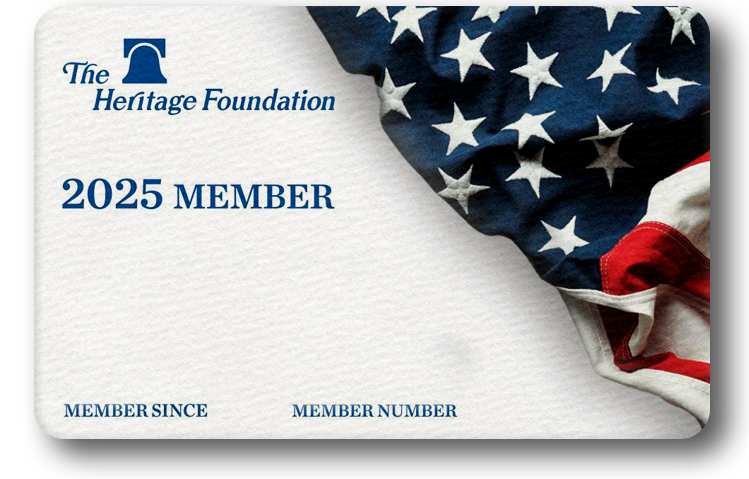President Donald Trump has returned to the Oval Office with a central national security focus: peace through strength. As elsewhere throughout American national security agencies, U.S. European Command (EUCOM) has taken up this charge. Aligned with the President’s guidance, American officials including Secretary of State Marco Rubio, Secretary of Defense Pete Hegseth, and EUCOM Commander General Christopher Cavoli have underlined the importance of substantially increased Allied defense efforts paired with an enduring American commitment to a strong North Atlantic Treaty Organization (NATO).
To cement this direction, during the next NATO summit in the Hague, from June 24 to 25, 2025, the United States should support increased burden sharing by securing annual defense spending targets at 3.5 percent or above to fund enhanced capabilities, announcing the next Supreme Allied Commander Europe (SACEUR) appointment, and catalyzing the process to cement NATO’s China strategy.
NATO’s security and defense depend on fielded Allied capabilities guided by the Concept for the Deterrence and Defense of the Euro Atlantic (DDA) as an outgrowth of national defense spending. As General Christopher Cavoli, current NATO SACEUR stated, “The DDA family of plans is really the ‘how’ of how the alliance will operate in peace, crisis and war to provide for our collective defense.”REF
This DDA family of plans is the logical endpoint for NATO capabilities targets stemming from the NATO Defense Planning Process. Since the end of the Cold War, America’s NATO Allies have funneled money formerly reserved for defense into social and infrastructure spending as a peace dividend. This resulted in significantly reduced European military capacity, as displayed by European reliance on American military assets to address regional contingencies in Bosnia, Kosovo, and Libya.REF Most recently, European NATO members have demonstrated an inability or refusal to deal with the threat to European commercial shipping by the Houthis, and the United States has once again stepped in to fill the security vacuum and solve the problem. Due to NATO’s present threat environment, Allied Command Transformation Commander Admiral Pierre Vandier is calling for a 30 percent increase in military capability targets to resource the DDA plans.REF Nevertheless, to this day, an unequal burden has been placed on American shoulders to provide NATO’s core defensive capabilities.REF
Confronted by a deteriorating security environment in the European and Indo–Pacific theaters, the NATO spending target must be raised to a minimum of 3.5 percent to fund the capabilities increases necessary to deter Russian revanchism and counter Middle Eastern and African instability. This increased funding and expanded European military capacity should be the core goal for President Trump at the Hague Summit. This is because NATO Allies committing to real burden sharing will realize the promise of NATO’s Article 3 while freeing American assets critical to deterring aggression in the Indo–Pacific.
SACEUR’s guidance will be central to implementing this vision. Mirroring General Dwight D. Eisenhower’s leadership of the European theater in World War II, the SACEUR is NATO’s chief military commander and has traditionally been an American officer who is dual-hatted as Commander of EUCOM. But it is American doctrine, institutional influence, and strategic effectiveness that underpin the importance of announcing the next SACEUR appointment to succeed General Christopher Cavoli, not a yearning for past tradition.
Since World War I, American doctrine has dictated that U.S. troops fight under an operational chain of command terminating with an American military officer (and through them to the U.S. President). SACEUR’s status as an American military officer conforms to this standard and simplifies command logistics. Another part of SACEUR’s central responsibilities is overseeing, refining, and advising NATO defense planning efforts across overall, regional, and domain-specific plans and the integration of capability targets therein. As NATO’s pre-eminent military commander, SACEUR’s voice has an outsize influence on the final planning outcomes and drives allied military investments. Finally, U.S. command, control, intelligence, surveillance, and reconnaissance (C2ISR) systems form the backbone of modern NATO logistics from the strategic to the tactical level, and these assets are located at or coordinated from America’s EUCOM bases.
As a result, America’s NATO Allies have expressed concern about diminishing U.S. commitment due to leaked reports that America may terminate its traditional provision of SACEUR officers. Further, U.S. nuclear weapons that are shared with NATO to ensure nuclear deterrence are only permitted to be under the command of a U.S. military officer due to ultimate command authority for nuclear employment always remaining with the President of the United States. Since SACEUR is central to the maintenance of American military doctrine, American institutional influence, and NATO’s strategic effectiveness, appointment of an American flag officer to succeed General Cavoli will strengthen President Trump’s hand in NATO revitalization.
Regarding China’s challenge to NATO members, NATO’s 2022 Strategic Concept recognized the “systemic challenges posed by the PRC to Euro-Atlantic security…the PRC’s coercive tactics and efforts to divide the Alliance,”REF but the relationship has darkened over the intervening years, not least through China’s clear role in covering up the lab leak origin of the COVID-19 epidemic.REF China has also sustained the Russian war machine in UkraineREF and continued to invest in critical infrastructure which threatens Allied securityREF while perpetrating ever more sophisticated cyber operations.REF Due to its increasing threat to NATO members’ security and prosperity, the Alliance must undertake a thorough, systematic review to determine the best strategic response to the PRC’s threat. Otherwise, America risks a potential conflict in the Indo–Pacific compromising critical military capabilities and separating allied efforts.
Recommendations for NATO
In order to re-establish credible deterrence, President Trump should encourage NATO to:
Pursue a 3.5 Percent of GDP Annual Minimum Target by 2030. With widespread agreement among NATO members that increased defense spending is necessary, and President Trump’s public position that NATO members’ spending should increase toward 5 percent, a 3.5 percent of gross domestic product (GDP) annual defense spending target at The Hague Summit in June represents a substantial downpayment on required capabilities. The 3.5 percent target, which the United States is already on track to meet in fiscal year 2026 under the National Defense Authorization Act and defense reconciliation bill, will accelerate progress on European NATO capabilities and right size burden-sharing through larger relative spending increases by other NATO members.
Secure Increased NATO Capability Targets with Yearly Progress Reports. The June 2025 NATO summit at The Hague should finalize Allied agreement for the needed 30 percent increase in capability targets, with establishment of yearly progress reviews. With this priority NATO can ensure that capability targets avoid becoming a paper tiger, and inclusion of yearly progress reviews would avoid repeating accountability frustrations with past spending and capability targets by forcing states to stand by their efforts each year.
Appoint a U.S. Flag Officer as the Next SACEUR. NATO’s First Secretary General Lord Ismay reportedly stated that one of NATO’s core objectives was to keep the Americans in Europe (alongside keeping the Russians out and the Germans down). Despite modern shifts as regards Germany, an American SACEUR has reassured Allies of U.S. commitment for generations while ensuring operational readiness and strategic effectiveness. A successor appointee will ensure America’s continued control over NATO military planning at a minimum of additional investment. While it may not yet be the right time for a European SACEUR, future sharing of this position may emerge provided America’s NATO Allies in Europe credibly sustain major defense spending and capability gains in the years ahead.
Commission a NATO China Strategy. NATO has recognized the threats and challenges posed by the People’s Republic of China in the 2022 Strategic Concept and confidential annual reports laying out strategic concerns about China. However, without a comprehensive strategy to operationalize and prioritize these findings, NATO risks becoming mired in strategic indecision to the disadvantage of America and its allies. European NATO members should of course be primarily focused on deterring Russia and stabilizing its near abroad but can be helpful in deterring China through preventing the transfer of defense-applicable technologies, condemning Chinese aggression against countries like the Philippines and Vietnam, and defense industrial base collaboration with countries like Australia, Japan, South Korea, and Taiwan.
Conclusion
The United States is forced by strategic necessity to shift some vital strategic resources from Europe to the Indo–Pacific, as China presents an unparalleled near-term challenge to American security. Luckily, the United States has wealthy and competent NATO Allies in Europe that can provide most of the conventional deterrence in theater. Setting targets of 3.5 percent of GDP across the Alliance, with funding wisely allocated to the most pressing capability gaps, is an outstanding first step toward deterring aggression in both Europe and the Indo–Pacific.
Jordan Embree is Research Associate in the Margaret Thatcher Center for Freedom at The Heritage Foundation. Wilson Beaver is Senior Policy Advisor for Defense Budgeting in the Douglas and Sarah Allison Center for National Security at The Heritage Foundation.




